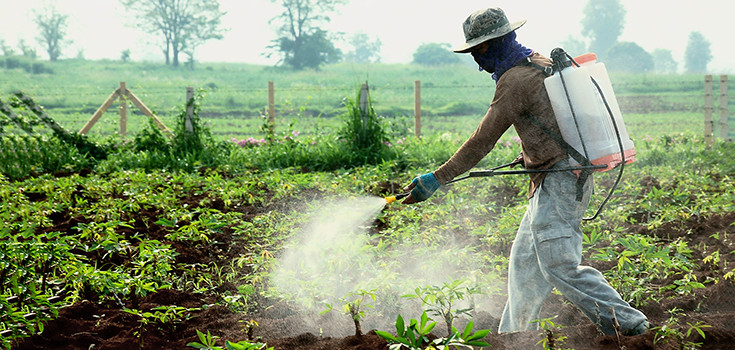Study: Dicamba (Herbicide) Chemicals DO Harm Non-Targeted Plants and Insects
Study: Dicamba (Herbicide) Chemicals DO Harm Non-Targeted Plants and Insects
And it is harming us too
Dicamba herbicide was registered with the EPA in 1967.
Dicamba herbicide was registered with the EPA in 1967. It contains 2,4-D, MCPP, and MCPA, all toxic chemicals that were marketed to kill specific, targeted weeds and nuisance pests on farms across America. But a new study from Penn State University has found thatDicamba herbicides drift to adjacent farms and fields, causing significant damage to non-targeted plant and pollinating insects.
Dicamba mimics the plant hormone auxin, causing uncontrolled growth, which eventually kills plants. While it was meant for only certain plants, it seems to eventually kill everything in its path. When the herbicide drifts, it ends up in adjacent fields, delaying the flowering of desirable plantsspecifically needed by the honeybee population for their sustenance.
According to researchers at Penn State and the Pennsylvania Association for Sustainable Agriculture, and John Tooker, associate professor of entomology:
“Because of the challenge of glyphosate-resistant weeds, new types of transgenic crops that are resistant to synthetic-auxin herbicides including dicamba and 2,4-D will be widely planted in coming growing seasons, raising concerns about damage from these drift-prone herbicides. The expected high rate of adoption of the new transgenic crops will increase dicamba and 2,4-D use by four to eight times. Our results suggest that widespread non-target damage from these herbicides may adversely affect pollinator communities.”
Read: EPA Reverses Decision on Dow’s Toxic Enlist Duo Herbicide
Sub-lethal doses were used in the research, and with the copious amounts of dicamba, as well as other herbicides, expected to be sprayed on crops, the damage could be catastrophic. Tooker further explained:
“We found that both plant species are susceptible to very low rates of dicamba — just 0.1 to 1 percent of the expected field application rate can negatively influence flowering. By extension, we expect that other broadleaf plant species are similarly susceptible to this sort of damage from drift-level doses.”
According to David Mortensen, professor of weed and applied plant ecologyat Penn State:
“This will lead to higher levels of non-target damage to susceptible crop plants and native, wild vegetation,” he said. “For susceptible crop varieties, this sort of damage could reduce yield. For non-crop plant species, this drift-induced damage could significantly decrease the pollinator and natural enemy communities that these plants can support.”
Adding dicamba to the damage already caused by glyphosate, neonicotinoids, and other pesticides, our pollinators and ecosystem are in grave danger.
| About Christina Sarich: | |
| Christina Sarich is a humanitarian and freelance writer helping you to Wake up Your Sleepy Little Head, and See the Big Picture. Her blog is Yoga for the New World. Her latest book is Pharma Sutra: Healing the Body And Mind Through the Art of Yoga. | |
Other Popular Stories:

Post a Comment